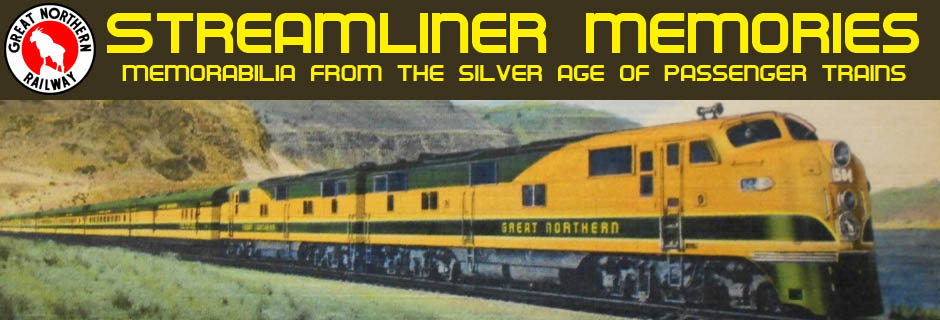Although the fully streamlined Olympian Hiawatha would not be introduced until 1947, the Milwaukee Road introduced lightweight, streamlined cars to the Olympian eleven years earlier. These included some head-end cars, coaches, and the diners that are the subject of this … Continue reading
Tag Archives: Feature-car brochure
The Overland Limited was a shadow of its former self when Southern Pacific decided to dress it up by adding a dome car in 1955. This brochure, issued in March 1956, encourages people to “see the High Sierra by day” … Continue reading
At first glance, this looks like the Frontier Shack booklet shown here before. But instead of opening up into 16 pages, today’s version unfolds into a six-panel brochure. Oddly, it is printed only on one side, so the six panels … Continue reading
This cute little brochure opens up to reveal Santa and some of his reindeer riding in a dome car. The brochure is undated, but probably was issued in 1954, the year NP added domes to the North Coast Limited. Click … Continue reading
In 1937, as Union Pacific, Burlington, and other railroads were feverishly streamlining entire trains, Pullman delivered to Great Northern at least a dozen semi-streamlined coaches for the Empire Builder. These “luxury coaches,” as GN publicists called them, were a great … Continue reading
While Great Northern applied the term “great domes” to all its dome cars, the railway’s full-length domes were certainly greater, at least in terms of weight (more than 90 tons) and cost ($325,000 vs. $225,000 for the short domes). They … Continue reading
This 1956 brochure uses NP’s typical black-and-white photos with red trim format to advertise the lounge car on NP’s Mainstreamer. This had been the coffee shop-lounge car on the 1948 North Coast Limited. The only decoration in that original car … Continue reading
In 1954 and 1955, Southern Pacific converted seven lounge and observation cars into three-quarter length dome cars. At one end of these cars, a lower-level lounge was overtopped by a high, domed ceiling, producing an expansive atmosphere accurately conveyed by … Continue reading
There’s no date on this booklet, but since the all-steel cars described in it have no air conditioning, it is likely from the 1920s. Although nominally 12 pages long, most of the interior pages are narrower than the full width … Continue reading
In an effort to make train travel more affordable, Pullman introduced what it called the Coach-Sleeper in 1940. The car contained ten semi-private rooms, half seating/sleeping three people and half six people. This meant a single car could accommodate 45 … Continue reading
